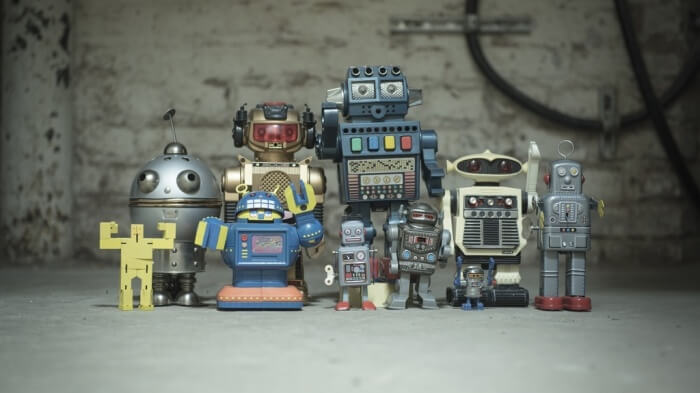Fashion’s Next Revolution Is All About Machine Learning
Why machine learning and artificial intelligence are about to disrupt the fashion industry.

Technology is already reshaping the fashion industry, from enabling online purchases through mobile devices to powering live streaming of runway shows. However, this innovation is just the tip of the iceberg: the fashion industry is going to change fast and change forever.
One of the biggest drivers of technological innovation will be machine learning (ML) and eventually artificial intelligence (AI). Algorithms will foresee what people want to wear, before they’re even aware themselves and will recommend outfits and looks based on personal, local and global trends.
While the opportunities are exciting, there is still some way to go in the fashion industry before machines can replace the work of stylists and trendsetters. We are, however, on the way, so what will this future look like and how will we get there?
Oh, the humanity
Machine learning is already achieving things that many thought were impossible a decade ago. A huge amount of work has gone into the recognition of images.
For example, to correctly recognise a blouse, thousands or even millions of images are used to train computers to identify items that are visually similar. This knowledge is then linked together to reveal symmetries and fashion trends that enable computers to make recommendations based on buying or browsing behaviour.
Fashion data, such as article representations and trend popularity, is critical to advancing ML capabilities, and companies like Zalando and Google are aggregating a lot of this data.
Within this information are insights about every element of fashion, giving machines the tools they need to categorise any item of clothing, footwear or accessory and make better purchasing suggestions for consumers.
However, these recommendations are currently a bit hit and miss. To deliver truly exceptional results, a human touch is still required.
In order to create a truly personalised recommendation, machines must understand both the person and the world of fashion, which is why human involvement and personal connections are still so integral to the process. Machines must not just comprehend trends, but also understand what works for a particular person.
Currently, machines can look at how individuals behave, browse and shop, and derive some insight from these observations. These insights can help machines make recommendations that are closely aligned with global fashion trends. But we still have a long way to go before they are able to provide the personal recommendations a human can.
To understand how machines can do even better, we can look at how stylists work. A great stylist must account for the personal preferences of the consumer; understand their taste, body type and how they want others to perceive them.
They pull from their experience with similar clients and their own taste and style. A successful stylist is able to recognise and work with all these different factors to deliver a recommendation that perfectly caters to the client’s style and aspirations. This level of intimacy is something that smart machines have yet to attain.
However, even here, software already has a place. By utilising the experiences of stylists, software can derive insights to improve recommendations, helping consumers find new fashion that they connect with.
In a nutshell, this is how we see the next few years of software in fashion progressing: a cooperation between man and machine where each complements the strengths of the other.
Fashion’s journey
ML has a lot to offer in terms of changing the fashion industry, with many businesses already reaping the benefits. Fashion plays a role in the shaping and strengthening of emotions and connections, and software and data will further intensify the link.
Just consider past purchases: machines can already draw parallels between different items and recommend fashion based on them. However, they cannot yet analyse the context around and between these purchases.
Was the item bought as a gift? Were multiple sizes of the same item purchased? Without insight into the reasons behind a decision, purchasing behaviour can create a false narrative.
What we expect to see happening over the next few years is a further focus on the intent behind decisions. By analysing, for example, how long a customer looks at an item, where their mouse hovers and what they are clicking on, we can infer a lot about what they are trying to do.
Are they just browsing? Looking for something specific? Going deeper, we can analyze data from returns and integrate consumer feedback about size, taste, and shape to enhance our understanding of the individual.
Machines can analyse this information, weaving it together to create a tapestry of consumer tastes and preferences. Over time, machines will begin to understand what a consumer is searching for or what they want to achieve. And then it will be able to offer recommendations that are on par with a highly-skilled stylist.
While true artificial intelligence is still far off, machines are getting adept at discovering the patterns that define trends – something that has huge value. But a human touch through the shopping journey is still enormously valuable.
The fashion industry will be at the forefront of this latest technological wave as it strives to become ever closer to consumers. We will see man and machine work more intimately than ever before, delivering an unparalleled service, something that all fashion players can get behind.
Eric Bowman is VP of Engineering at Zalando.
Thanks for signing up to Minutehack alerts.
Brilliant editorials heading your way soon.
Okay, Thanks!




